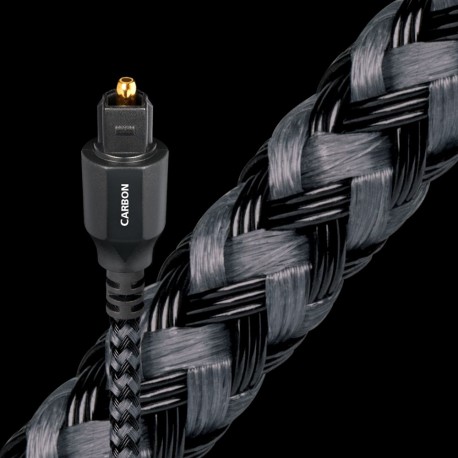










Please note: this cable comes with a 3.5mm mini Toslink adaptor attached to one end. Please remove this to use a standard Toslink connection at both ends.
The audio frontier is all abuzz these days with the pleasure possible though HDMI, USB, FireWire® and Ethernet connections. However, these current generation digital technologies are only part of the story, just as the challenge of designing, manufacturing and choosing the best analog interconnects and speaker cables is as important as ever. The S/P-DIF (Sony® Philips Digital InterFace), which arrived in 1983 along with the CD, is still very much a part of our world today. S/P-DIF is transmitted through Digital Coax and Toslink fiber optics (EIA-J), making them still some of the most important cables in electronic entertainment.
While, thanks to HDMI, Toslink is not so often used to connect a DVD player to an A/V receiver, Toslink connectors are common on cable-boxes, TV sets, subwoofers, all sorts of products. And now, the 3.5mm Mini Optical connector, also somewhat incorrectly known as Mini-Toslink, is everywhere … from the 3.5mm dual-purpose headphone jack on a Mac laptop, to inputs on some of the finest portables.
For these many reasons, AudioQuest has refined and renewed our line of serious high performance OptiLink cables. All models and all lengths are now available Toslink to Toslink and Toslink to 3.5mm Mini Optical.
When the question is “how can a fiber-optic cable change the sound?” … the answer is easier to explain than for almost any other type of cable. If the light source were a coherent laser, firing into a vacuum, all the light would stay straight, arriving at its destination at the same time. Even if the LED light source in a Toslink system were coherent, the light entering a fiber-optic cable is scattered and dispersed by imperfections and impurities in the fiber. This can be measured as a loss of amplitude … but amplitude is not the problem, a 50% true loss would have no effect on sound quality.
The problem is that the dispersed light does get through the cable, but only after it has taken a longer path, like a pool ball bouncing off the side-rails, causing it to arrive later. This delayed part of the signal prevents the computer charged with decoding this information from being able to decode properly, or even at all. The inability to decode shows first at higher frequencies (not audio frequencies, this is a mono stream of digital audio information), so reduced bandwidth is a measurable signature of light being dispersed by a fiber. The punch line: The less dispersion in the fiber, the less distortion in the final analog audio signal presented to our ears.
There is another serious dispersal mechanism in the Toslink system. The fiber is a relatively huge 1.0mm in diameter, and the LED light source is also relatively large, spraying light into the fiber at many different angles. Even if the fiber were absolutely perfect, the signal would be spread across time because light rays entering at different angles take different length paths and arrives with different amounts of delay.
The almost complete solution to this problem is to use hundreds of much smaller fibers in a 1.0mm bundle. Because each fiber is limited as to what angle of input can enter the fiber, there is far less variety, and far less dispersion over time. This narrow-aperture effect is similar to how a pin-hole camera can take a picture without a lens … by letting in light at only a very limited range of angles, a picture can be taken, whereas removing the lens from a wider aperture would make photography impossible. Less light gets through a multi-fiber cable, but the light that does get into the fibers comes out within in a much smaller time-envelope.
So there is one problem, the dispersion of light across time … and two avenues towards a better result: less dispersion in the fiber (better polymers and ultimately quartz), and less dispersion by filtering the input angle. How simple is that! Listen and enjoy.
AudioQuest has been the largest cable supplier to the high-end specialist market for many years. AudioQuest is sold in several hundred outlets in the US and in over sixty countries. Bill Lowe (Founder) is especially pleased that this success has been possible despite his insistence that the foundation of the company, and the foundation of AudioQuest marketing, must be the performance of the product. In the audio world, many professionals have learned that it is not always convenient to listen to the products they sell … they might learn something they don’t want to know! Bill has always understood the challenge of basing the existence of AudioQuest on the performance of the product. However, to Bill, this is the only reasonable way to do business and the only acceptable way to combine his passion for music (and all things high performance), with his need to make a living.
Your review appreciation cannot be sent
Report comment
Report sent
Your report cannot be sent
Write your review
Review sent
Your review cannot be sent

check_circle
check_circle